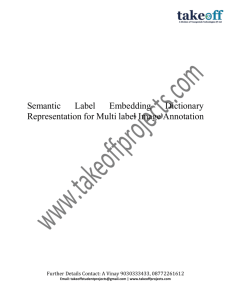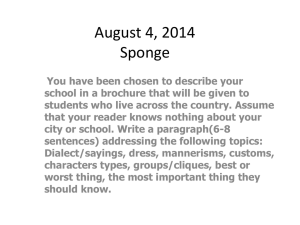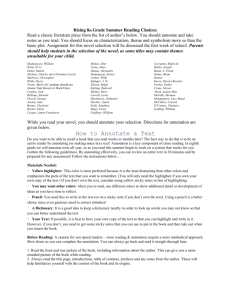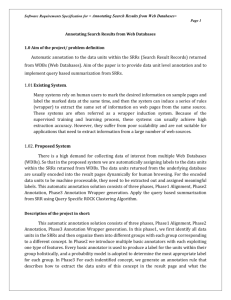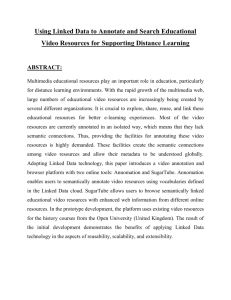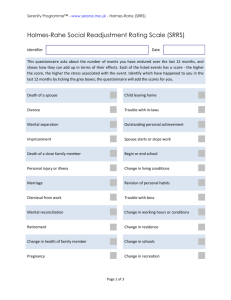“ Annotating Search Results from Web Databases”
advertisement
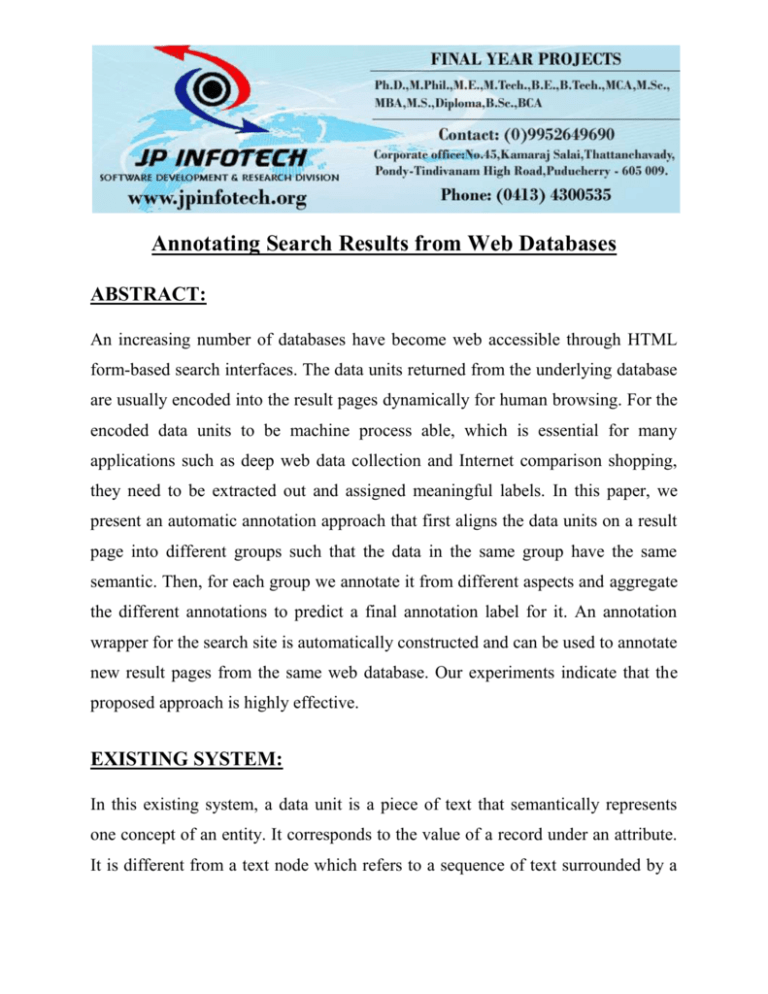
Annotating Search Results from Web Databases ABSTRACT: An increasing number of databases have become web accessible through HTML form-based search interfaces. The data units returned from the underlying database are usually encoded into the result pages dynamically for human browsing. For the encoded data units to be machine process able, which is essential for many applications such as deep web data collection and Internet comparison shopping, they need to be extracted out and assigned meaningful labels. In this paper, we present an automatic annotation approach that first aligns the data units on a result page into different groups such that the data in the same group have the same semantic. Then, for each group we annotate it from different aspects and aggregate the different annotations to predict a final annotation label for it. An annotation wrapper for the search site is automatically constructed and can be used to annotate new result pages from the same web database. Our experiments indicate that the proposed approach is highly effective. EXISTING SYSTEM: In this existing system, a data unit is a piece of text that semantically represents one concept of an entity. It corresponds to the value of a record under an attribute. It is different from a text node which refers to a sequence of text surrounded by a pair of HTML tags. It describes the relationships between text nodes and data units in detail. In this paper, we perform data unit level annotation. There is a high demand for collecting data of interest from multiple WDBs. For example, once a book comparison shopping system collects multiple result records from different book sites, it needs to determine whether any two SRRs refer to the same book. DISADVANTAGES OF EXISTING SYSTEM: If ISBNs are not available, their titles and authors could be compared. The system also needs to list the prices offered by each site. Thus, the system needs to know the semantic of each data unit. Unfortunately, the semantic labels of data units are often not provided in result pages. For instance, no semantic labels for the values of title, author, publisher, etc., are given. Having semantic labels for data units is not only important for the above record linkage task, but also for storing collected SRRs into a database table. PROPOSED SYSTEM: In this paper, we consider how to automatically assign labels to the data units within the SRRs returned from WDBs. Given a set of SRRs that have been extracted from a result page returned from a WDB, our automatic annotation solution consists of three phases. ADVANTAGES OF PROPOSED SYSTEM: This paper has the following contributions: While most existing approaches simply assign labels to each HTML text node, we thoroughly analyze the relationships between text nodes and data units. We perform data unit level annotation. We propose a clustering-based shifting technique to align data units into different groups so that the data units inside the same group have the same semantic. Instead of using only the DOM tree or other HTML tag tree structures of the SRRs to align the data units (like most current methods do), our approach also considers other important features shared among data units, such as their data types (DT), data contents (DC), presentation styles (PS), and adjacency (AD) information. We utilize the integrated interface schema (IIS) over multiple WDBs in the same domain to enhance data unit annotation. To the best of our knowledge, we are the first to utilize IIS for annotating SRRs. We employ six basic annotators; each annotator can independently assign labels to data units based on certain features of the data units. We also employ a probabilistic model to combine the results from different annotators into a single label. This model is highly flexible so that the existing basic annotators may be modified and new annotators may be added easily without affecting the operation of other annotators. We construct an annotation wrapper for any given WDB. The wrapper can be applied to efficiently annotating the SRRs retrieved from the same WDB with new queries. ALGORITHMS USED: Alignment algorithm SYSTEM CONFIGURATION:HARDWARE CONFIGURATION: Processor Speed - Pentium –IV 1.1 Ghz RAM - 256 MB(min) Hard Disk - 20 GB Key Board - Standard Windows Keyboard Mouse - Two or Three Button Mouse Monitor - SVGA SOFTWARE CONFIGURATION:- Operating System : Windows XP Programming Language : JAVA Java Version : JDK 1.6 & above. REFERENCE: Yiyao Lu, Hai He, Hongkun Zhao, Weiyi Meng, Member, IEEE, and Clement Yu, Senior Member, IEEE-“ Annotating Search Results from Web Databases”- IEEE TRANSACTIONS ON KNOWLEDGE AND DATA ENGINEERING, VOL. 25, NO. 3, MARCH 2013.

